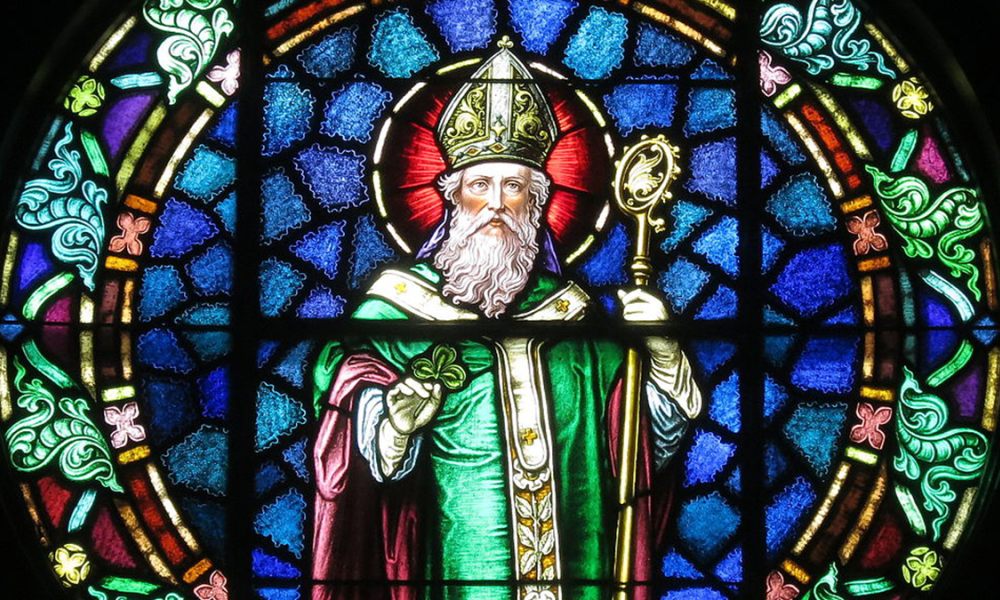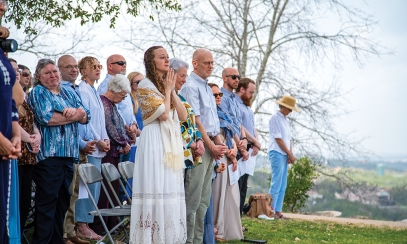
Saints for Our Times
While Tending Sheep, St. Patrick Learned to Rely on God’s Mercy
While Tending Sheep, St. Patrick Learned to Rely on God’s Mercy
Millions of people celebrate St. Patrick’s Day with parades and festivals honoring the “Apostle to the Irish People.” Would St. Patrick also join in these events? Probably not because this humble man would not accept honors on his own behalf. Perhaps if he knew that the parades and festivals were an old Irish custom, he would join in because he respected Irish customs and traditions.
So much of Patrick’s life is enshrouded in myth and legend. Patrick himself relates a few facts about his life in his “Confession,” which he wrote in his old age. He was born into a relatively wealthy family of clerics in Roman Britain about 389. His grandfather was a priest, and his father was a Roman British deacon. Paul Burns writes in “Butler’s Lives of the Saints” that no law of celibacy was yet imposed on the Western clergy.
When he was about 16, he was captured by Irish raiders and carried off to slavery in Ireland. He spent the next six years as a shepherd (of sheep). Burns writes that this experience changed his personality. He learned to cast himself on God’s mercy and to rely on the power of prayer.
A few years later, Patrick heard a voice in his sleep telling him to be ready to escape. He traveled some 200 miles overland until he came to the sea and found a ship’s captain willing to give him passage home.
He returned to his family and began training for the priesthood. John Delaney writes in the “Dictionary of Saints” that Patrick studied at the monastery of Lérins and received his training from the Latin Bible. He was ordained in about 417 but did not return to Ireland until several years later.
Again, it was voices in the night that implored him to return to Ireland. Anne Gordon writes in “A Book of Saints” that saving the souls of the Irish became his mission. Pope Celestine consecrated Patrick as bishop of Ireland to succeed Paladius, the first Irish bishop, who had died and left a small community of Christians.
During the next three decades, Patrick preached to the Irish in the western and northern portions of the country. The society in Ireland at that time revolved largely around nomadic tribes or clans. The people worshipped several gods and goddesses.
Jenny Schroedel writes in “The Book of Saints” that when Patrick sought to bring Christianity to the native people, his approach was respectful. He respected Irish customs and traditions and converted Irish festivals into Christian solemnities or holidays.
Burns writes that Patrick preached a simple but compelling trinitarian doctrine of God’s love and providence, redemption through Christ and the dwelling of the Spirit in people’s hearts. He baptized thousands, ordained hundreds of Irish clergy and founded several monasteries.
John Delaney writing in the “Dictionary of Saints” credits Patrick with raising the standards of scholarship, encouraging the study of Latin, and bringing Ireland into closer relations with the rest of the Western Church. He also worked to reform harsh Irish justice and the rule of might over law. In 444, he set up his episcopal see at Armagh.
Patrick wrote three works: “Letter to the Soldiers of Coroticus” in which he denounced the killing of Irish Christians by marauding Christian Welshmen; “The Confession,” containing biographical information; and “The Lorica,” a mystical poem.
Patrick died in March 461 at Saul on Strangford Lough, where he had built his first church.



